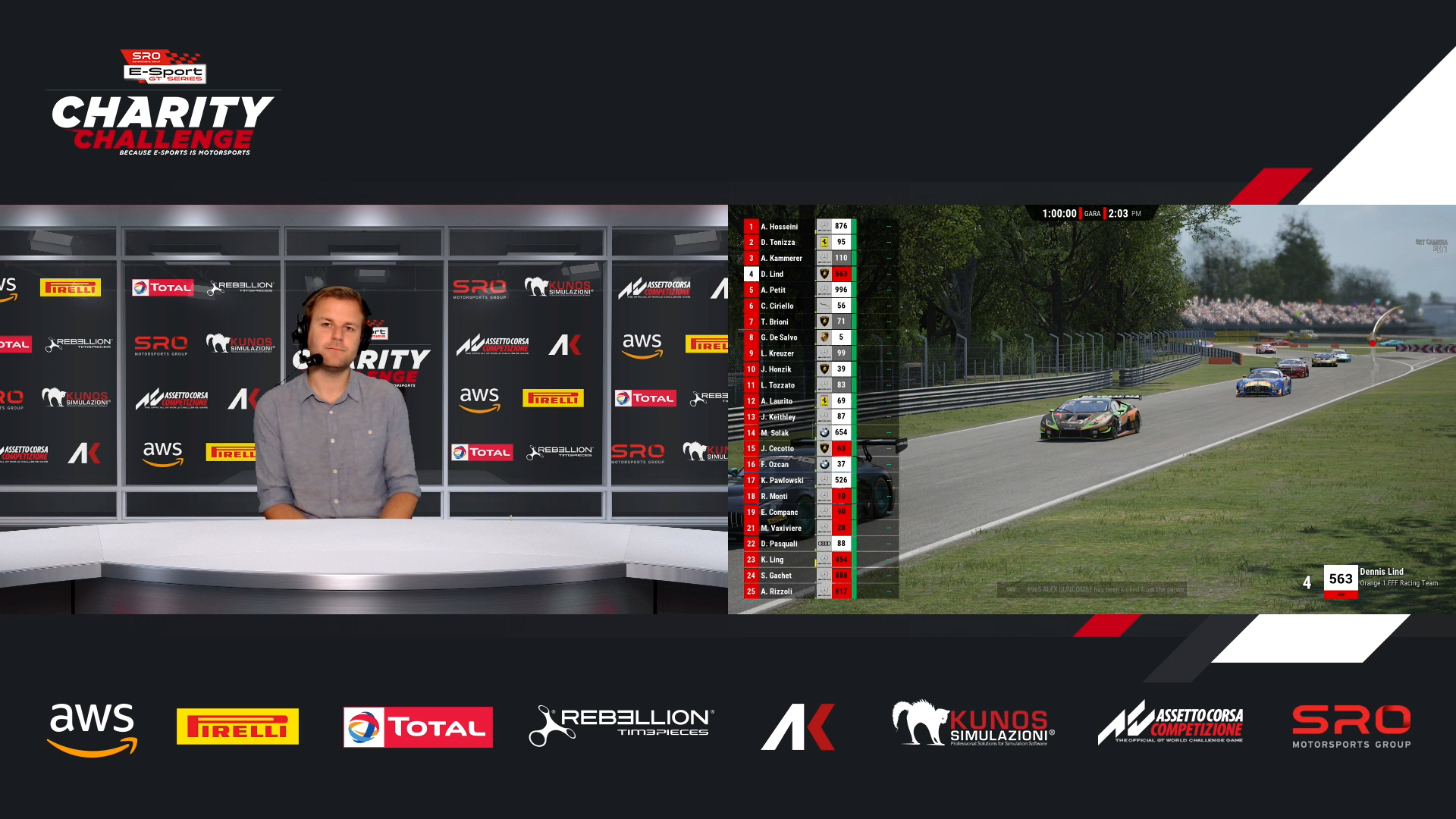Video Transport helps remotely produce esports racing events

When we covered Weave Creative Media in our previous story, we mentioned that they’ve always been into esports — producing important racing tournaments, often for well-known brands. This story is about how Video Transport was used to produce a series of esports events with remote contributors — anchors in different cities of Europe. Nicholas Boscarello has shared his team’s experience as well as details about the production setup.
In Italy every video production was cancelled. All esports events were planned to be at real locations, but this COVID situation really, really changed the method of work — now we need to transport feeds between cities to do everything remotely.
Their most recent production was for the SRO Motorsports Group, where real racing drivers, including Formula One stars Jenson Button and Charles Leclerc, took part in a competition on the Assetto Corsa Competizione platform — a professional simulator by Italian video game developer Kunos Simulazioni.
They are real drivers, real racing drivers that now, with all sports being locked down, are rediscovering their passion for different racing classes. Even Valentino Rossi, a MotoGP champion, is participating in car races during this time.

Video Transport was used for two reasons:
- to deliver the game feed from the observer computer located in Milan, Italy to anchors located in different parts of England and France;
- to deliver broadcast-quality feeds from the anchors to the video mixer.
The challenge was to deliver the game feed to remote anchors in real time with as little latency as possible: they were to see and comment on the game feed instantly.
Esports really needs to be real-time. But the most important thing is not just real time, but everyone at the same time. That’s really crucial for us. With Video Transport we were able to achieve this and it’s really, really cool stuff.
Before the launch of VT Guest, VT Publisher was used on the contributors’ side to send quality feeds to VT Receiver located in Milan, where all anchors’ feeds were pushed to the vision mixer.
But after the release of VT Guest it was much easier to do this because the anchors no longer needed to configure the Publisher — they just needed to launch VT Guest. It was really, really easy for us to work with them. We used VT Guest a lot in the last tournament we did, and it worked really nice to both receive the game feed from us in high quality as well as send their video and audio feed to the main mixer. It’s really easy to use.
Since VT Guest does not block access to the camera, the web contribution link was used as a backup on Windows machines. It was important that the low-latency web preview is also available on Mac since not all anchors are running Windows.
After a lot of testing we felt like it was the right solution for us — the right tool to send and receive quality feeds across the world. During the past months it was reliable enough to let us deliver to our clients a broadcast-quality show with less setup time and without the need to use more expensive tools like backpacks.
The real-time game source and feeds received from anchors were mixed in a 3D virtual studio built from scratch specifically for this event — a green screen was placed behind each of the anchors in order to produce a high-quality show.
It’s really something that clients like because we were able to create a show that doesn’t look so remote-produced. It looks like something that is achievable in a real location. That’s what our clients like a lot.

Weave’s studio setup consists of two computers running the observer server and two systems running vMix. The main vision mixer PC:
- ingests the game feed from the first observer PC via SDI into the vMix system;
- pushes an SRT feed out to Teradek Core (a cloud-based distribution service used by the client).
The second PC runs the backup video switching system as well as:
- VT Publisher that picks up the SDI feeds from the second observer PC and sends them out to anchors to be viewed via VT Guest or the preview link;
- VT Receiver that receives feeds from remote anchors and generates the different NDI feeds to be picked up by the main mixer PC.
Feeds from the second observer server are ingested by both vMix systems: in the main vMix it runs as backup; in the second one it is used by VT Publisher to send out the feed to the anchors.

Both vMix systems are based on Intel i9 9900K, 32Gb of RAM and a GeForce RTX 2080 Ti graphics card. A Decklink 8K Pro on each of the vision mixing PCs is used to ingest SDI feeds from the observing servers. The Internet connection is a 1000 Mbps downlink and a 500 Mbps uplink.
We did 3 different productions using your product; the first one was in the main quarantine week here in Italy, so we really archived everything remotely. We had a technician in the office and everyone else was at home. We used VT to send and receive feeds not just from the game and anchors but also from the vMix screen, so I was able to work from home with zero latency.
